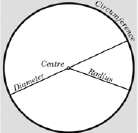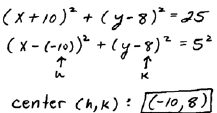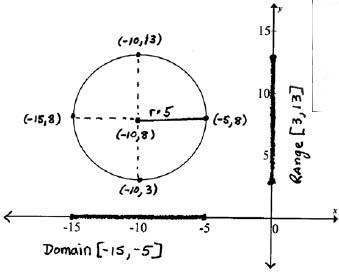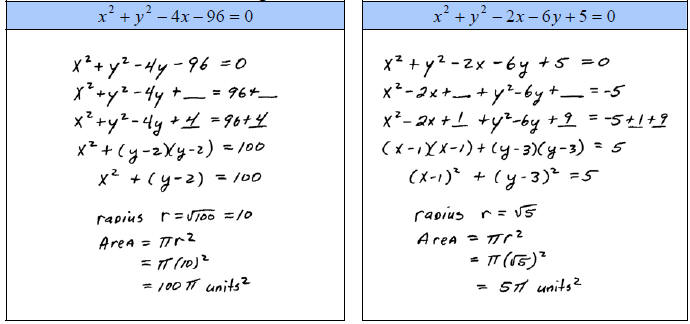Now we are ready to begin graphing circles . Recall from
geometry that the
radius of a circle is one -half of its diameter or d = 2r. Also, it will be
useful to
know that the perimeter of a circle, or circumference, is given by C=2πr
and the area is given by 


From the equation of a circle in standard form we can see
that a circle is
completely determined by its center and radius. In addition , notice that it is
not a function because it fails the vertical line test .
Graph
 |

 |
 |
First plot the center .
Then use the radius
and plot points 5
units up, down, left
and right.
Label the points on
the circle. |
Use standard form to
identify the radius r
and the center (h, k). |
|
Even though a circle is not a function, it is a relation
and we could still find the domain
and range. In addition, we will be asked to find the x- and y-intercepts. This
particular
example does not have any but the technique to find them is the same method used
throughout this study guide.
To find y- intercepts set x=0 and solve for y.
To find x-intercepts set y=0 and solve for x .
A. Graph the circles and label the x- and y-intercepts.

Graphing circles in standard form is just a matter of
identifying the center and the radius.
The difficulty comes when the circle is not given in standard form. In this case
we will
have to complete the square twice as illustrated below.
B. Rewrite the circles in standard form and identify
the center.

C. Find the area of the following circles.
